Which fretting technique should you learn?
AKA: One Finger Per Fret vs Simandl
There’s a heap of internet beef out there for bass fretting techniques. In an internet world full of loud, definitive claims, it can be difficult for the beginning bass player to know which fretting technique to learn.

There is the One Finger Per Fret Technique (OFPF).
There is the Simandl Technique.
Both have their devotees and supporters. Both have their detractors and haters.
So then, which of the two fretting techniques is the one to learn? How do you make this seemingly life-altering-never-to-be-undone choice? Which technique is better? Which one will make you more popular? Which one is guaranteed to solve your problems and make you a delicious sandwich?
I will, eventually, tell you which technique is the best. I will also debunk the great Bass Fretting Myth.
But first… before I jump in and declare a winner and do my best to rile up the internet-world of bassists… allow me to introduce you to these two different techniques.
Meet The Challengers
#1One Finger Per Fret Technique
In the one-finger-per-fret (aka OFPF) technique, one finger gets assigned a fret in a position, covering 4 frets total.
For example, if you were to play on frets 5, 6, 7 and 8, you would use your index for the 5th fret, middle for the 6th, ring for the 7th and pinky for the 8th fret.
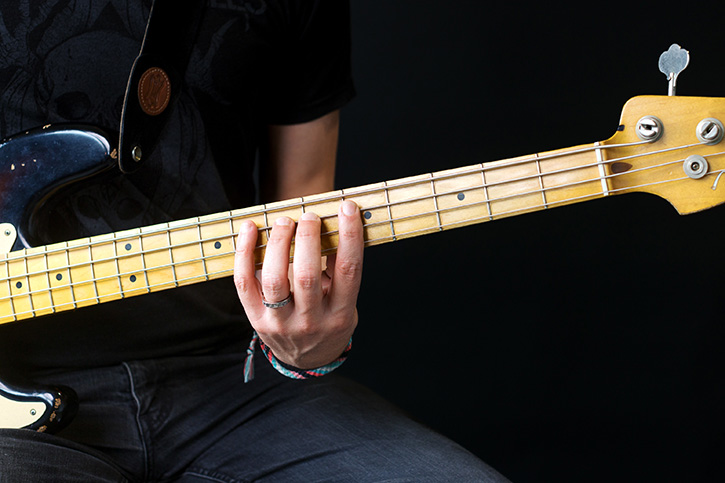
OFPF technique does NOT mean you need to hold your fingers in perfect position over these different frets at all times. This prolonged stress and stretch can be too physically demanding and can cause pain for players, particularly those with small hands.
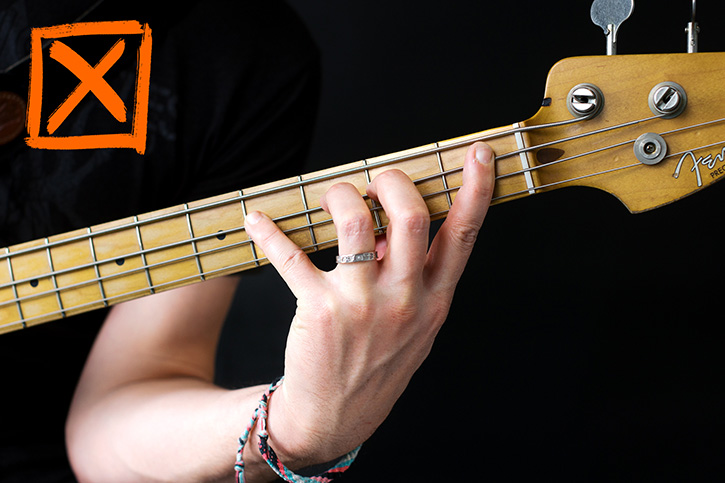
OFPF technique just dictates what finger to use to play those frets when they NEED to be played.
Thus, rather than keeping your hand stretched and covering all 4 frets at all times, you can shift inside of the 4 fret position to allow your hand to relax. I call these shifts inside of the OFPF technique “microshifting.”
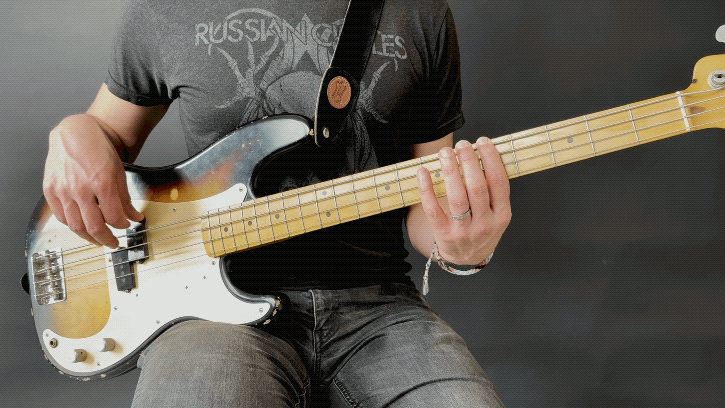
#2The Simandl Technique
If the quality of a fretting technique was determined by the size and grandeur of one’s mustache, there would be a clear winner to our battle.
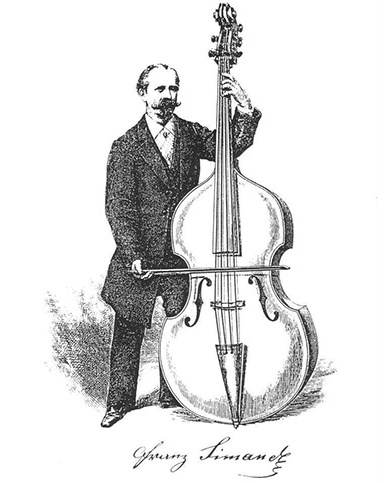
The Simandl technique comes from an upright bass method book by Franz Simandl first published in 1881. (I’m sorry… I just can’t ever get over his mustache.)

As the term is commonly used on electric bass, “Simandl technique” means fretting with the index, middle, and pinky – 1, 2, 4 – which covers a 3 fret span on the fretboard.
The ring finger doesn’t get its own fret. It frets BEHIND the pinky, supporting that hard-to-tame lil’ pinky finger.
For example, if you were to cover frets 5, 6 and 7, your index finger would play the 5th fret, your middle finger would play the 6th fret and your pinky would play the 7th fret, with the ring finger playing the 7th fret behind the pinky, lending support.
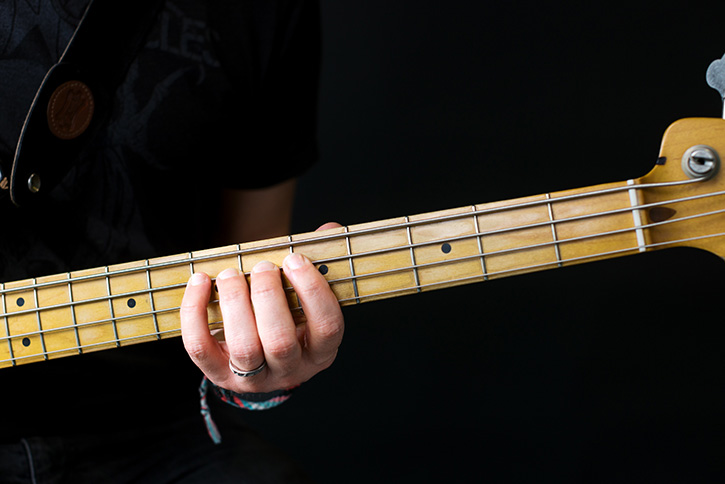
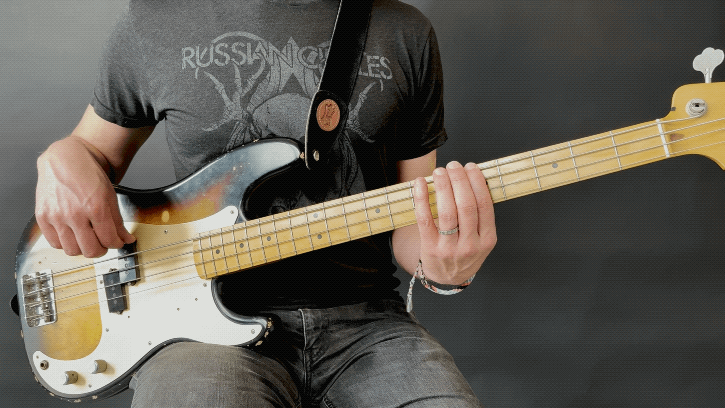
There Can Be… More Than One!
If you’re a “more-is-more” type of player, you might instantly see these two techniques and declare the OFPF technique as the ultimate way to play. After all, you’re covering one more fret. It’s not one louder… but the general principle is the same.
If you love mustaches or prefer a more relaxed hand position, you might have already declared yourself an eternal defender of the Noble Kingdom of Simandl.

Hey.
Slow down there, Highlander. There can be more than one.
The great bass fretting myth that states “There is one superior and exclusive fretting technique” is internet silliness and has no place in the real world of playing music.
Both techniques are glorious and work great in different situations.
Claiming that there can be only one, or that one is inherently better than another is only helpful if you like stirring up s*#% on bass forums.
It would be like showing up on a carpenter forum and saying “Hammers are the only real tool! Hammers are great, screwdrivers suck!”

They’re both good tools. Have both tools. Know how to use both tools.
I’ll go through the strengths and weaknesses of each, and give you some music to check out if you’d like to have a real-world reference for the types of musical scenarios that would favor each technique.
Simandl Riff
Doing It To Death
If you’d like an example of a song where Simandl would save your hands and arms a world of pain, check out James Brown’s Doing It To Death (with the great Fred Thomas on bass).

Strengths
Energy. The Simandl technique saves energy. This is a huge advantage, especially if you’re playing a groove like that James Brown riff for 5 or 10 minutes straight.
Small Hands. Also, if you have small hands, Simandl might be your weapon of choice more often, especially on the bottom frets where OFPF might feel challenging.
Mustache. The mustache.
Weaknesses
More Shifting. Since you only cover 3 frets, that means more shifting on bass lines that use more than 3 frets, which makes it less efficient for speed playing where you need to be ready for all the notes flying at you.

While Josh may not have the best mustache in the known bass world, he does have the best beginner bass course in the known bass world. Check it out right here!
One Finger Per Fret Riff
Time Bomb
For a musical example where OFPF would be an ideal choice, check out this bouncy, quick moving bass line from the Rancid song Time Bomb (featuring punk wizard Matt Freeman on bass).

The OFPF technique is strong where Simandl is weaker, and vice versa.
Strengths
Better efficiency. You get better efficiency for bass lines spanning more than 3 frets, which becomes critical at faster speeds.
Less transition noise. OFPF can help you minimize your transition noise (that scraping, finger on string sound) and shifting effort even at slow or medium tempos, like it did with Time Bomb (Round 2).
Weaknesses
More Tension. OFPF technique comes at the cost of holding more tension in your hand to stretch, especially on the lower frets.
Large hands. It favors the large handed, and may feel impossible at first…
No moustache. Not invented by a grandly-mustachioed Czech from the 1800s. (Or is this a strength? Hmm. Depends.)
But don’t despair!
If you want some more practice with one finger per fret and you want to discover the miracle that is micro shifting, check out the 5 Levels of Bass Finger Exercise video here!
Which Technique to Use
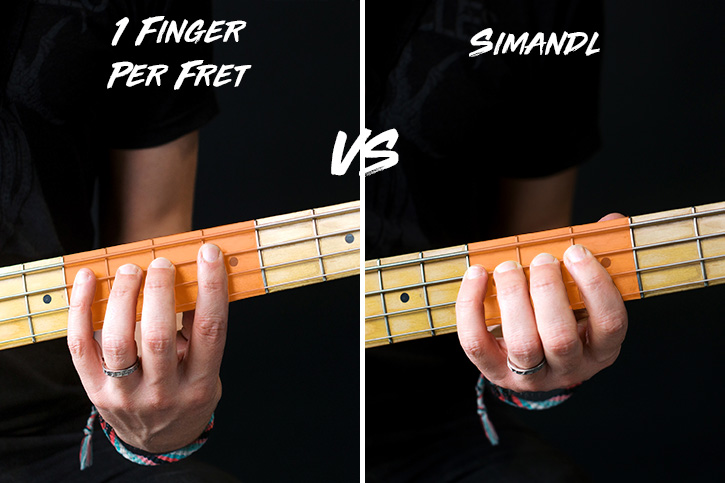
Given the strengths and weaknesses of each technique, given your own body and tendencies and approach to the bass, how then will you ultimately decide which bass fretting technique to use and when?

Decisions can be hard. Try this no-brainer: sign up for our completely free Kickstart Course.
First, you want to clarify whether you’re fingering for practice or performance.
- Practice Mode
If you’re in practice mode, running scales and exercises, it may make sense to use OFPF more often, because practice is about developing skills, such as stretching your fretting hand and building finger independence.
As a beginner, it takes some work to be able to stretch across a 4 fret span, which is a really useful skill for a heap ton of bass lines.
And it also takes work to get good independence between fingers, so they’re not misfiring and each one is ready to do what you tell it to do.
Using OFPF for practice will put more pressure on your stretching and finger-independence skills, which can be a good thing as long as you’re careful with your body and avoid pain, over-stressing, and death-grip-hand-tension.
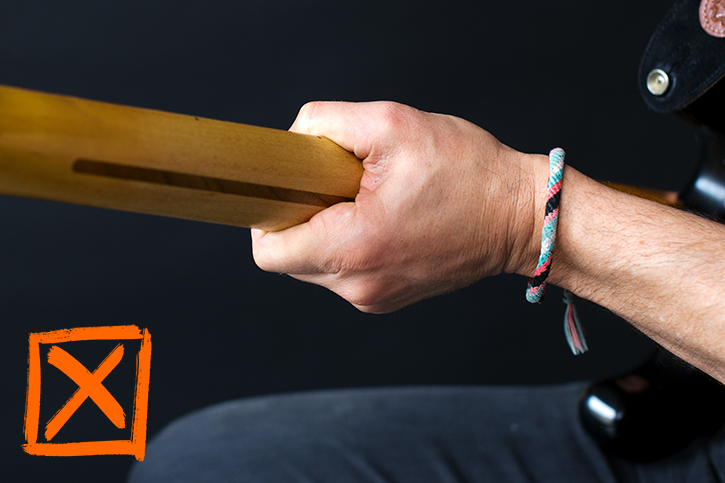
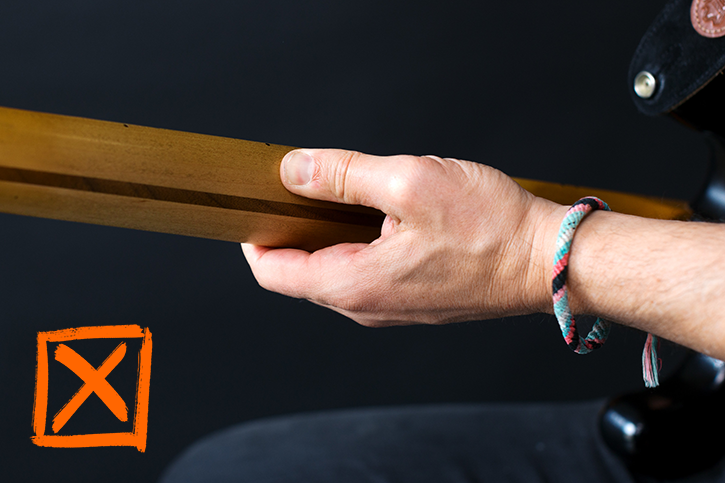
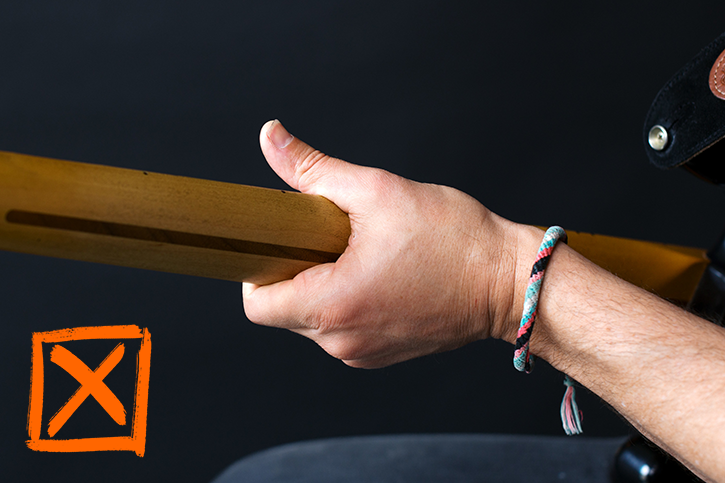
- Performance Mode
On the other hand, if you’re in performance mode, working on bass lines to actually play on stage, it’s all about doing the least amount of work for the maximum result.
In this mindset, you might bias more towards Simandl, because it uses less energy, and lots of bass lines don’t require stretching across more than 3 frets.
General Guidelines
Deciding which fretting technique to use for a given bass line isn’t an exact science, but I can offer a couple guiding principles:
- If what you’re playing is relatively slow, you can usually relax and use Simandl, regardless of how many frets you cover in the line, because you have plenty of time to shift.
- If you’re playing fast and the bass line covers 4 frets, then OFPF is probably your best bet.
But beyond that, there are way too many variables to give definite answers, including hand size and personal taste.
Both Techniques Riff:
Plush
If you’d like a bass line that blurs the lines of what technique to use and when, check out the Stone Temple Pilots song, Plush and Robert DeLeo’s gorgeous part.
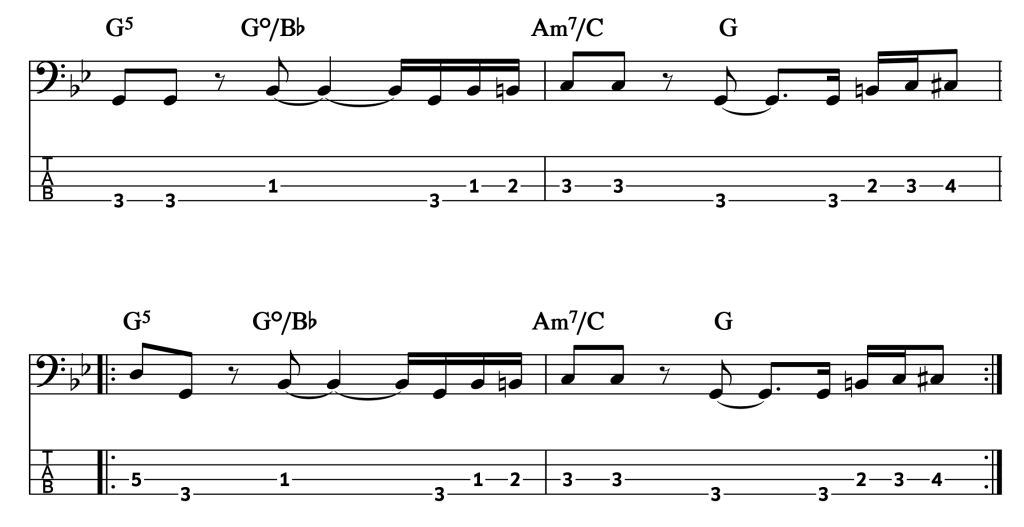
How would you play this? What technique works for you?
If it was up to me, I’d use a different technique for different parts. On the TAB below, I’ve marked what fretting technique I’d use for which part.
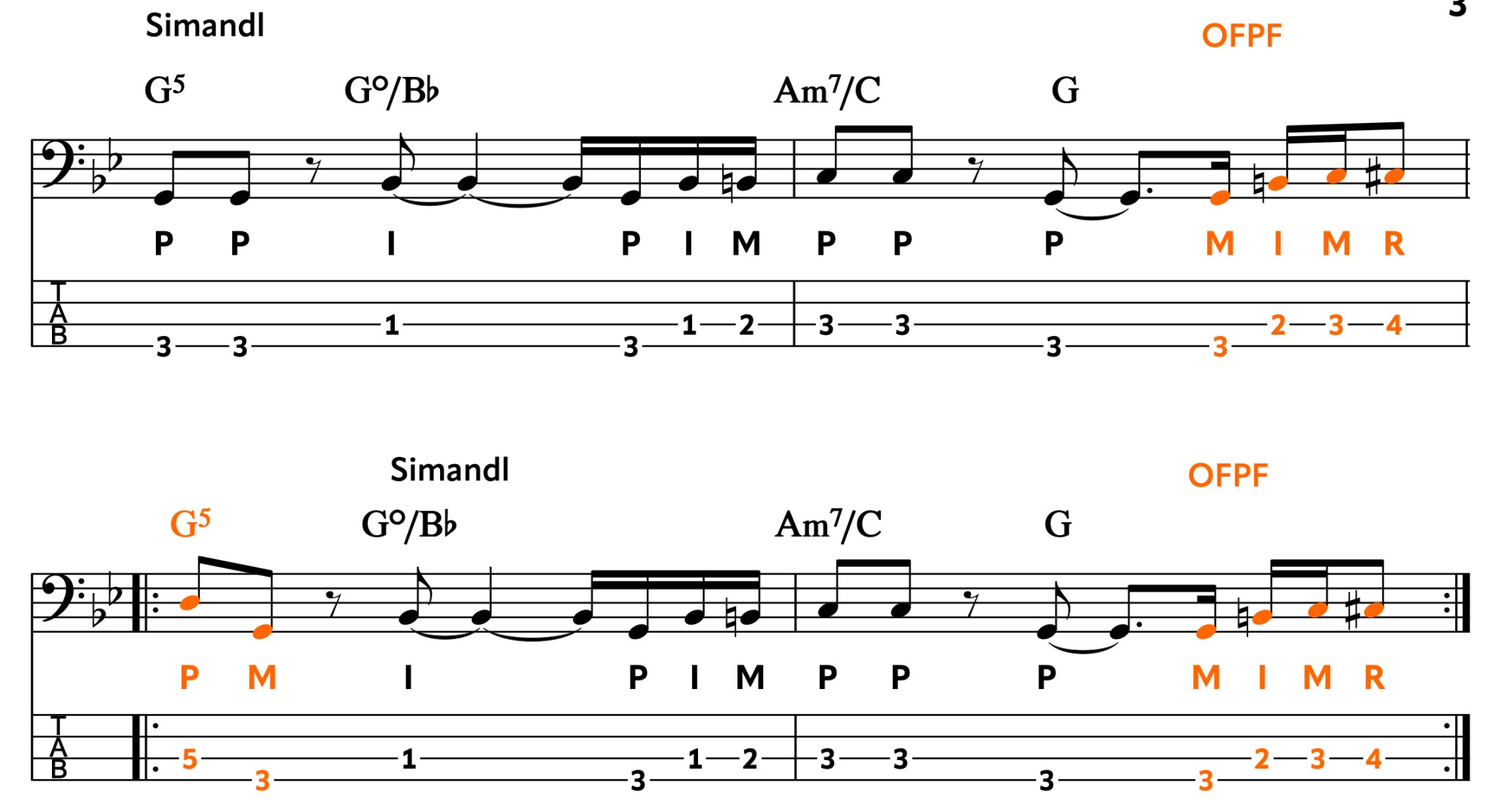
This is how every challenge is met. By using a combination of the techniques you have and choosing the one that will:
Keep you the most comfortable
Conserve the most energy
Sound the best when you play the bass line
Allow you to play the bass line with comfort and efficiency
Hardcore Definitive Answers
If you just finished this article and were really disappointed to end up with a really long it depends, I’m absolutely not sorry.
Internet instruction and competition for video clicks tends to skew things toward a confrontational, winner-take-all presentation of different ideas and techniques.
That’s experiential poison, right there. And the best way to learn to play is to play as much different music in as many different ways as you can until you find the way that works for you.
I hope you become a fluent user of both the Simandl and One Finger Per Fret techniques and that you use both where and when it makes the most sense for the music and for your body.
For an in depth walk through of each part of this article, check out this glorious video:


Comments
Got something to say? Post a comment below.